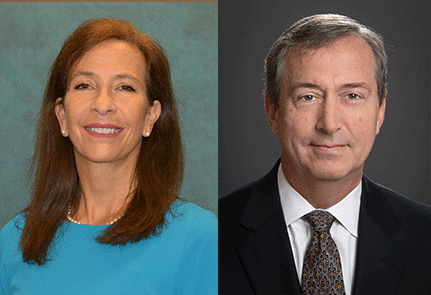From the President: Assessment of Knowledge and Skills: Advantages of OLA
By Robert M. Barr, MD, ABR President; Brent Wagner, MD, MBA, ABR Executive Director; and Brooke Houck, PhD, ABR Psychometrician
April 2024;17(2):2

As part of our commitment to the public, and consistent with the standards determined by the American Board of Medical Specialties (ABMS), the ABR Continuing Certification program includes methods to allow diplomates to demonstrate that they “have the knowledge, clinical judgment, and skills to practice safely and effectively in the specialty.”1 The ABR refers to this as “Part 3” of the Continuing Certification program.
Online Longitudinal Assessment
More than 95% of ABR diplomates use Online Longitudinal Assessment (OLA) to satisfy the Part 3 requirement. OLA fulfills another requirement of the ABMS which mandates that we “offer assessment options that have a formative emphasis and that assist diplomates in learning key clinical advances in the specialty.”1 The details of the OLA program were addressed in a previous issue of The Beam. Compared with a point-in-time exam, OLA has been preferred by ABR diplomates because it offers immediate feedback on specific question topics, a dashboard to show progress and performance relative to the standard, and an opportunity to learn (the formative component) while being assessed.
The weekly administration of OLA questions is focused on “walking-around knowledge”: knowledge that a typical radiologic professional would need in order to provide general clinical services without having to access reference texts or consult with a colleague. Because it corresponds to expertise applied in day-to-day professional work, the knowledge tested in OLA is not expected to be something for which a diplomate would need to research or commit to extensive study.
The longitudinal element of OLA is manifest in its continuous question distribution over the five-year cycle of Continuing Certification participation, and the platform retains the most recent 200 questions for individual users to review as desired.
A small number of elective question declines are available each year to allow for better alignment with the scope of one’s practice. OLA provides a tailored assessment for diplomates, whereas a point-in-time exam is more generalized and cannot accommodate the specificity of the various daily work activities of a wide range of radiologic professionals. When a diplomate elects to decline a question, she or he is customizing the assessment to cover what they do in practice, rather than what they, theoretically, might need to do in practice.
Continuing Certification Exam
The alternative to OLA is the Continuing Certification Exam (CCE). The CCE is offered to diplomates who choose not to participate in OLA or who have not met their standard via OLA. CCE content differs from OLA and requires some review or targeted study to refresh one’s knowledge of topics relevant to the practice of the discipline.
For medical physics and radiation oncology, the content is similar to that of the second qualifying exam, although adjustments are made to focus on the established practice of diplomates instead of preparation for certification for recently trained candidates. For diagnostic radiology and interventional radiology, the CCE is similar to the computer-based initial certification exam, with approximately 40% of the questions focusing on general topics (essentials of diagnostic radiology) and 60% on specialized content.
Passing the CCE results in a reset of the five-year cycle for the Part 3 requirement. The exam takes approximately four hours, is offered twice each year, and can be taken during year four or year five of the cycle.
Conclusions
ABR board members, as your professional peers, strongly encourage diplomates to participate in OLA rather than relying on the CCE option. OLA is more flexible, is built around adult learning theory, and includes the opportunity to identify and address knowledge gaps. OLA also allows for directed feedback to the ABR that supports continued improvement of not only the assessment process but also the scientific content. Lastly, OLA provides a customized experience aligned with one’s scope of practice, while the CCE measures a broader set of knowledge and skills less tailored to the individual radiologic professional.
- American Board of Medical Specialties. Standards for Continuing Certification. https://www.abms.org/board-certification/board-certification-standards/standards-for-continuing-certification/






